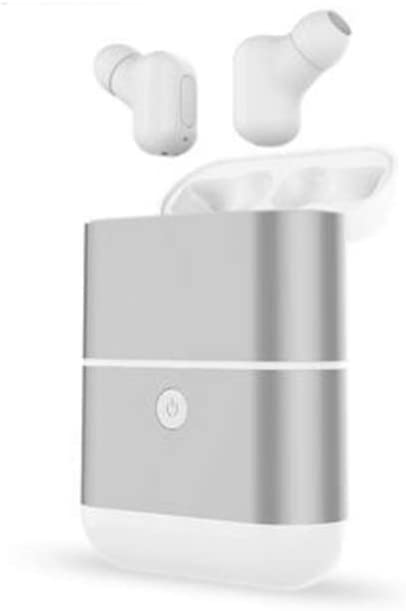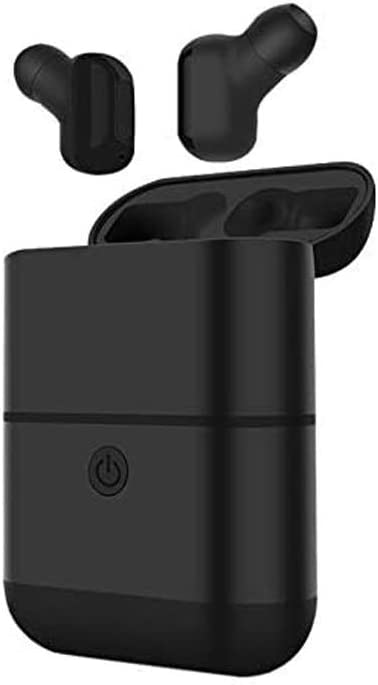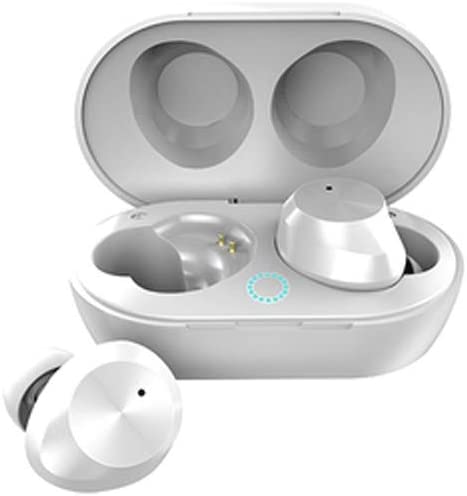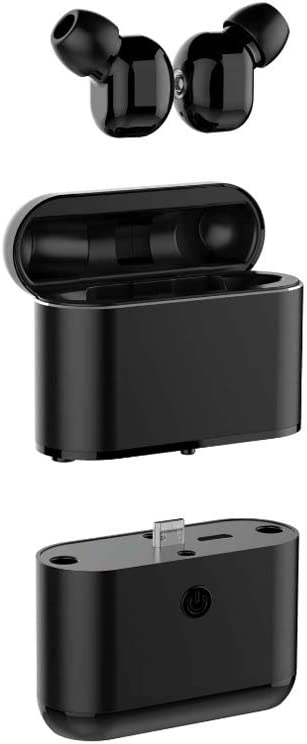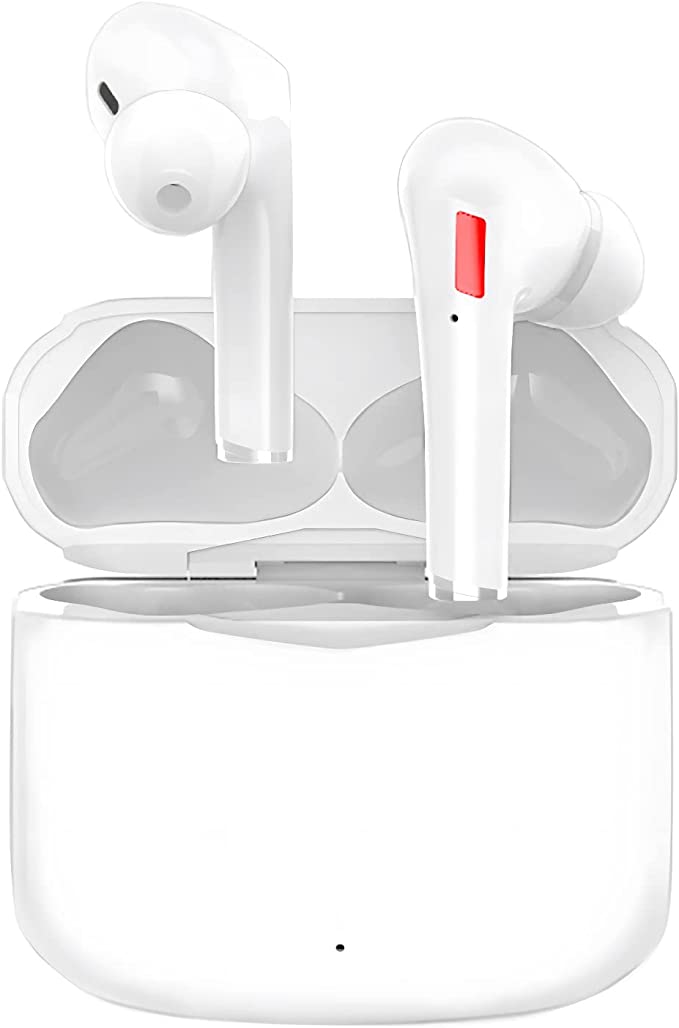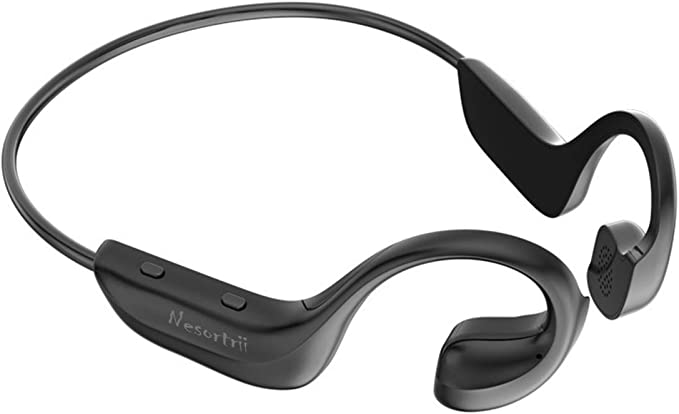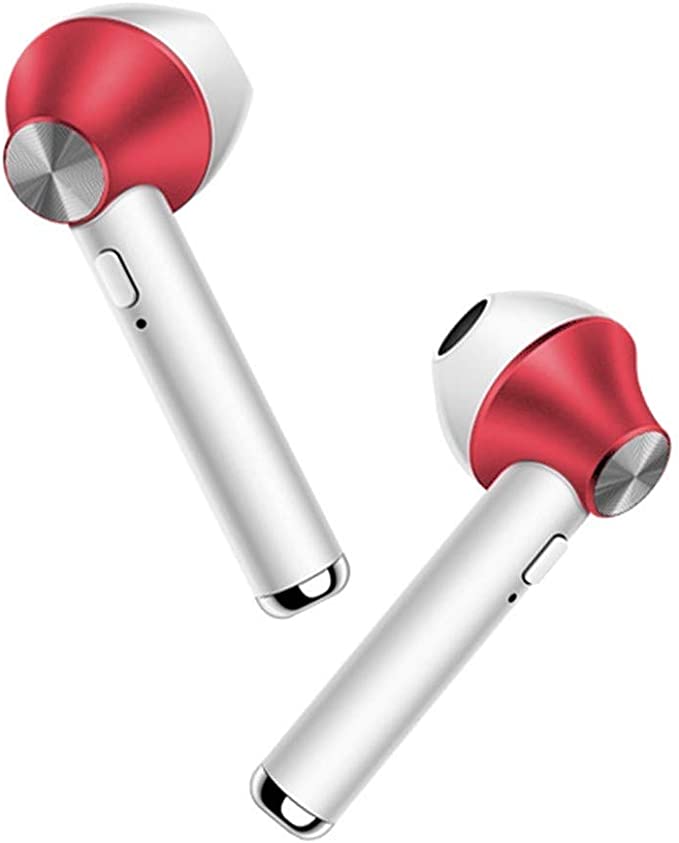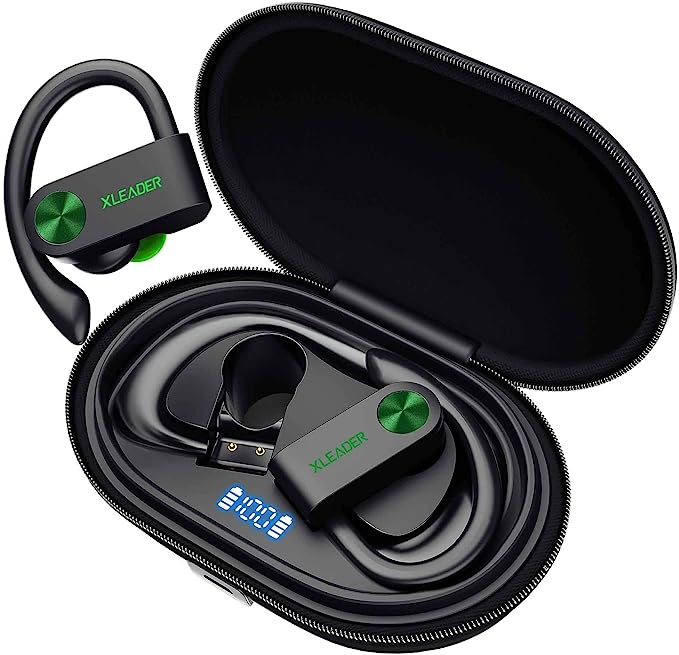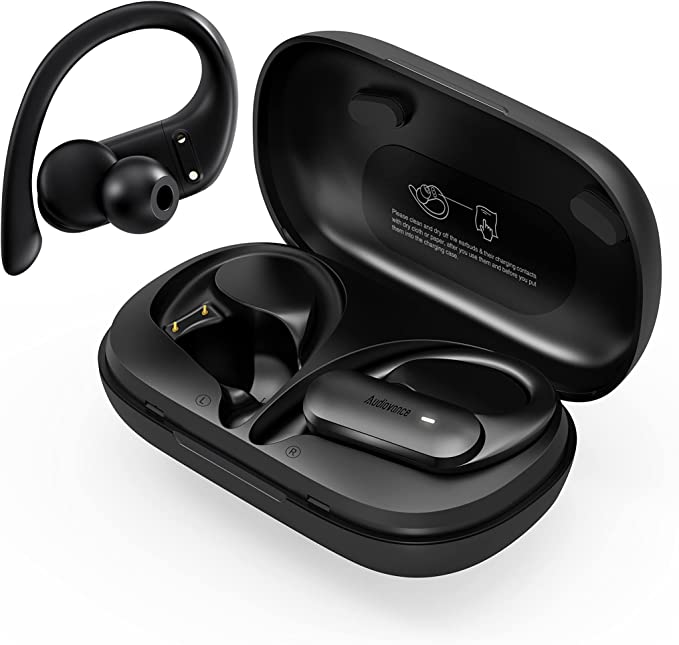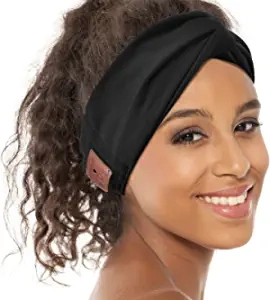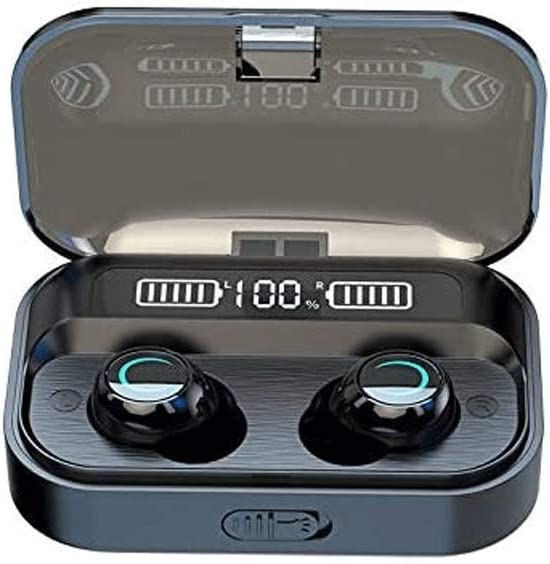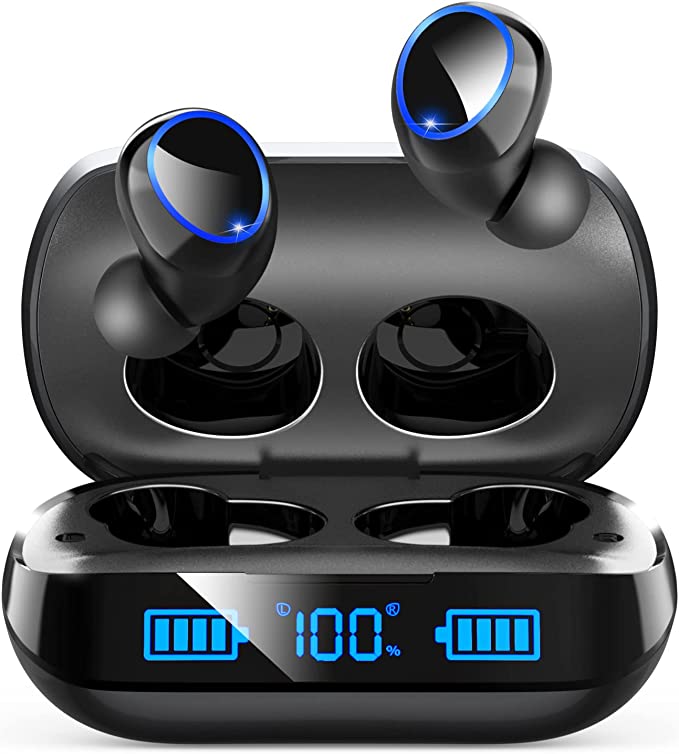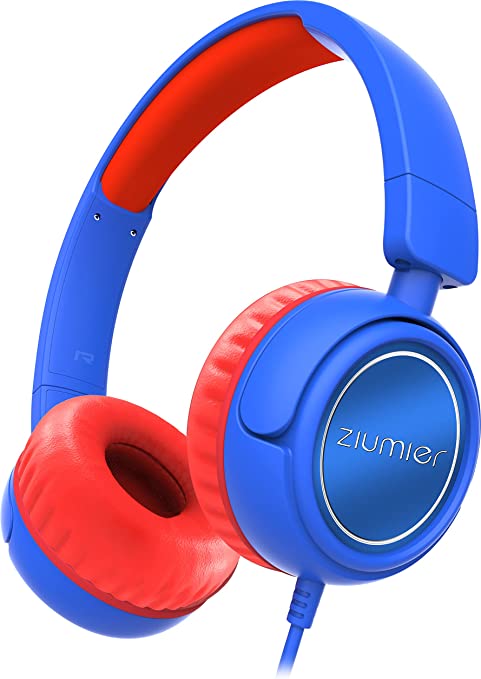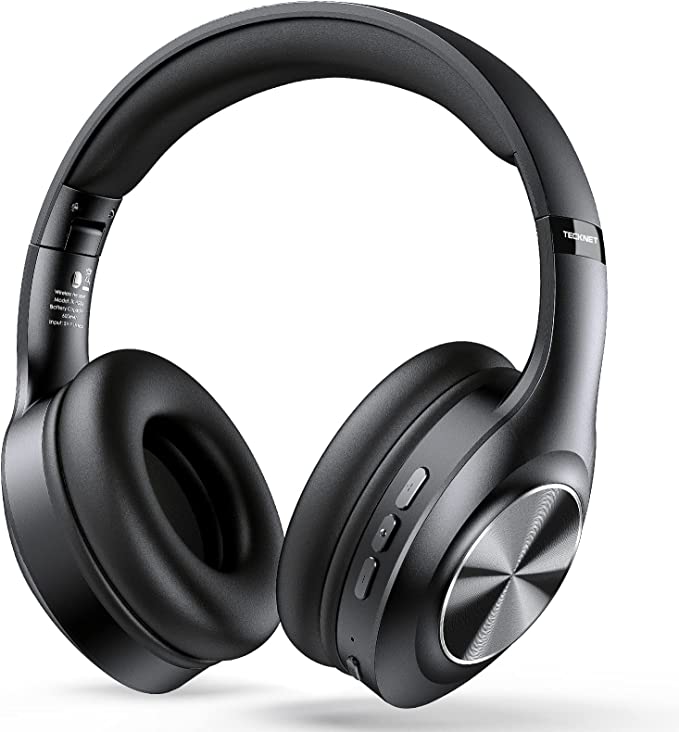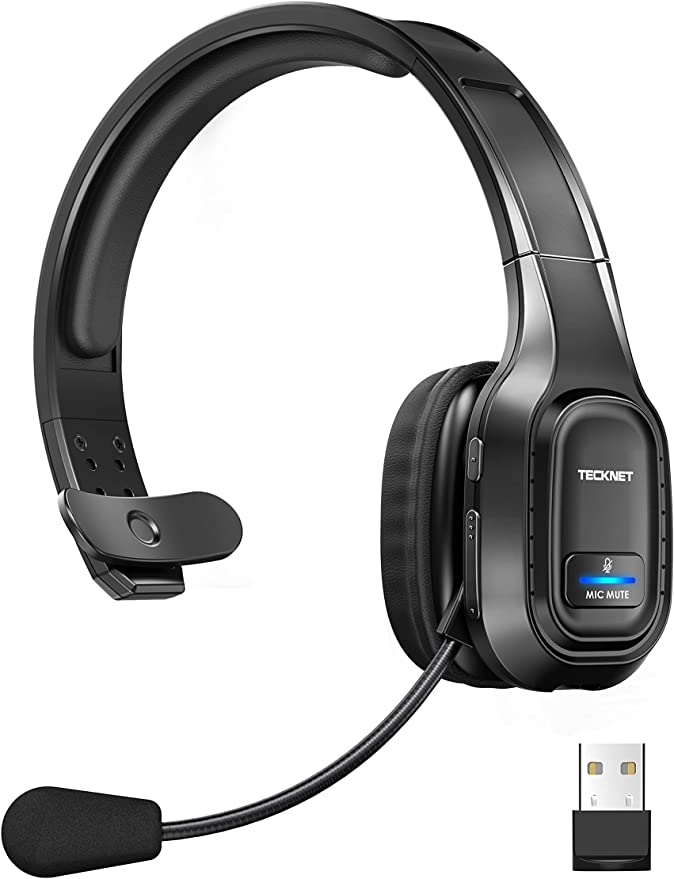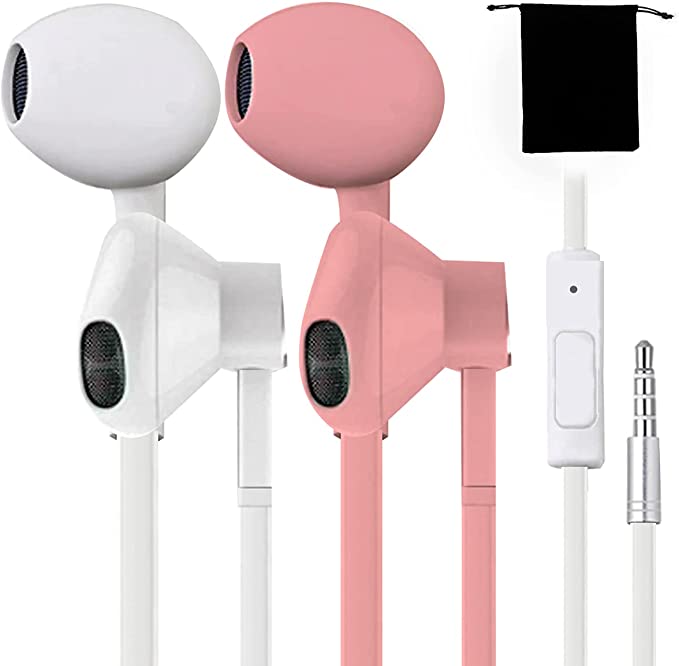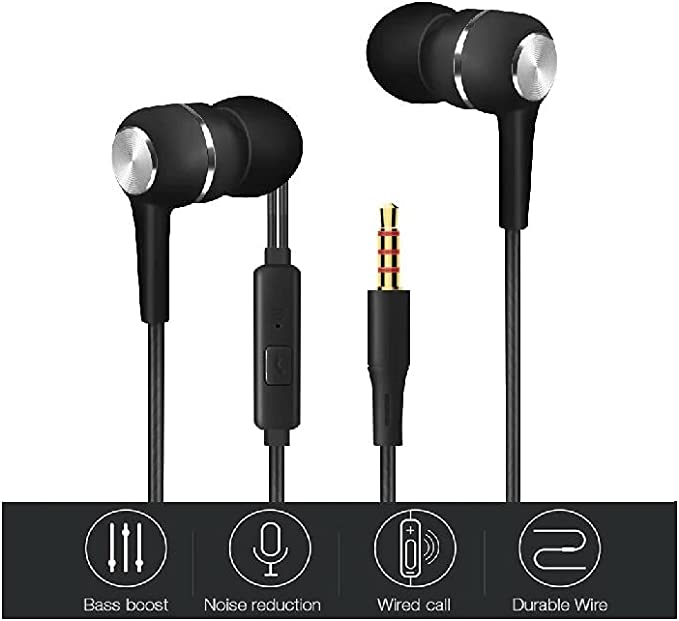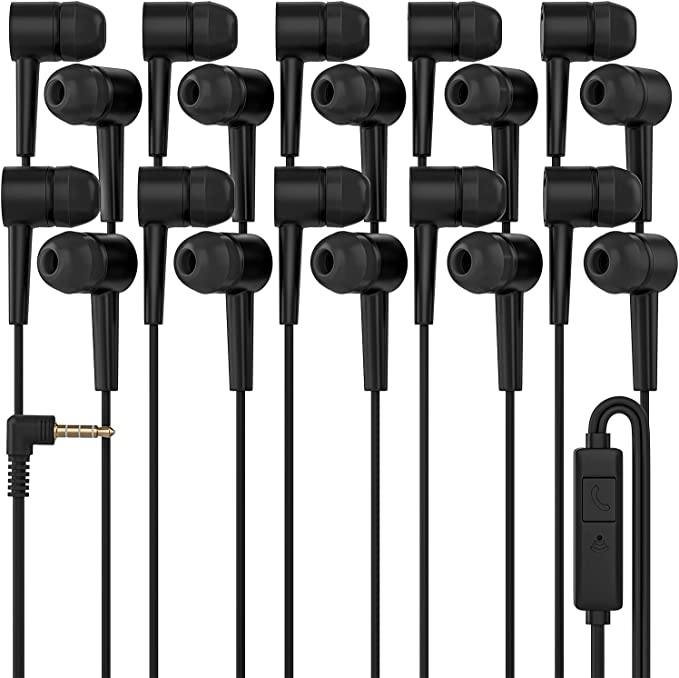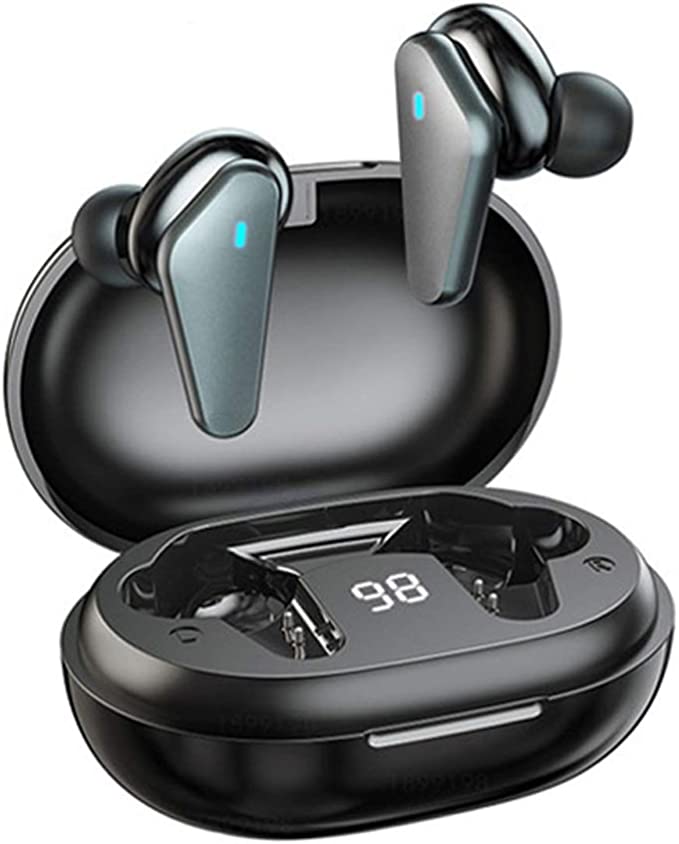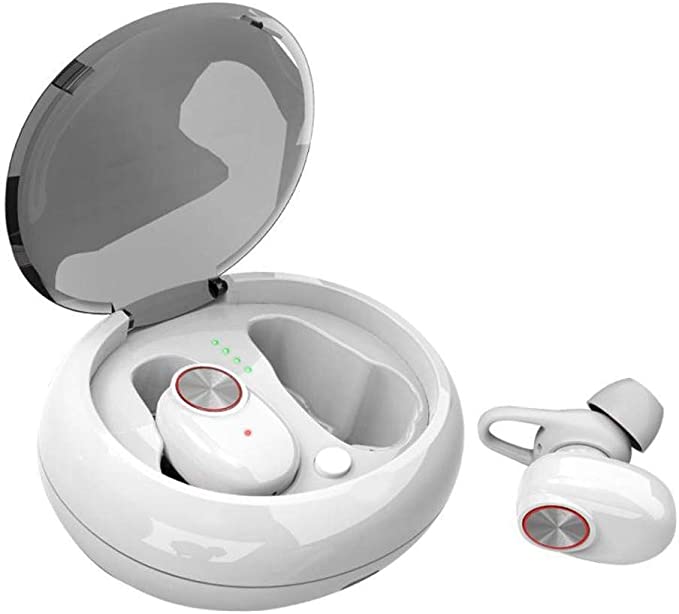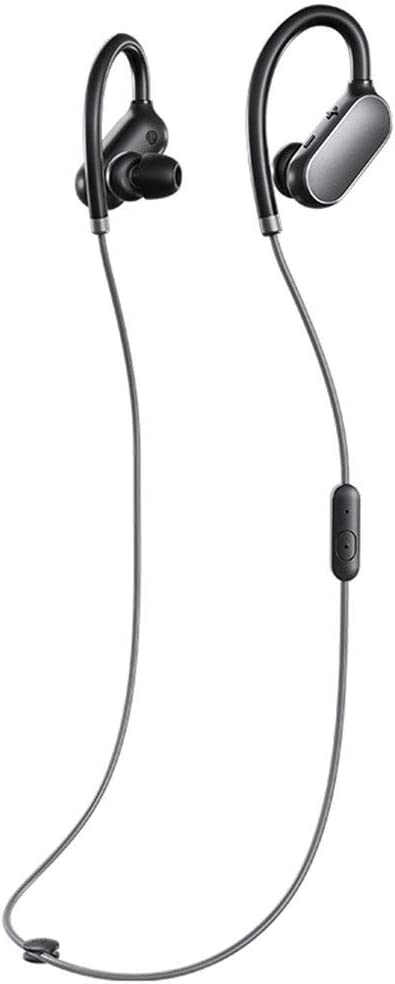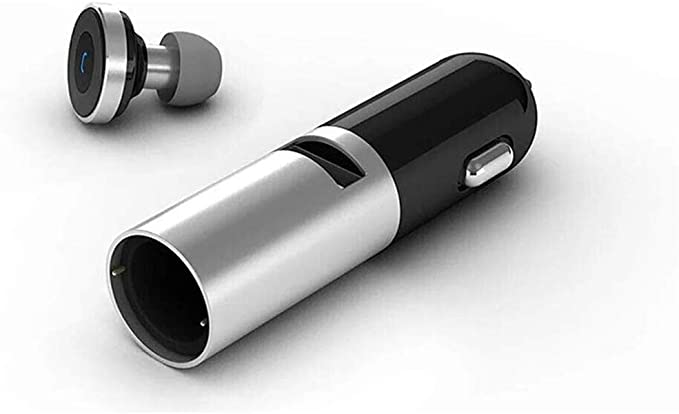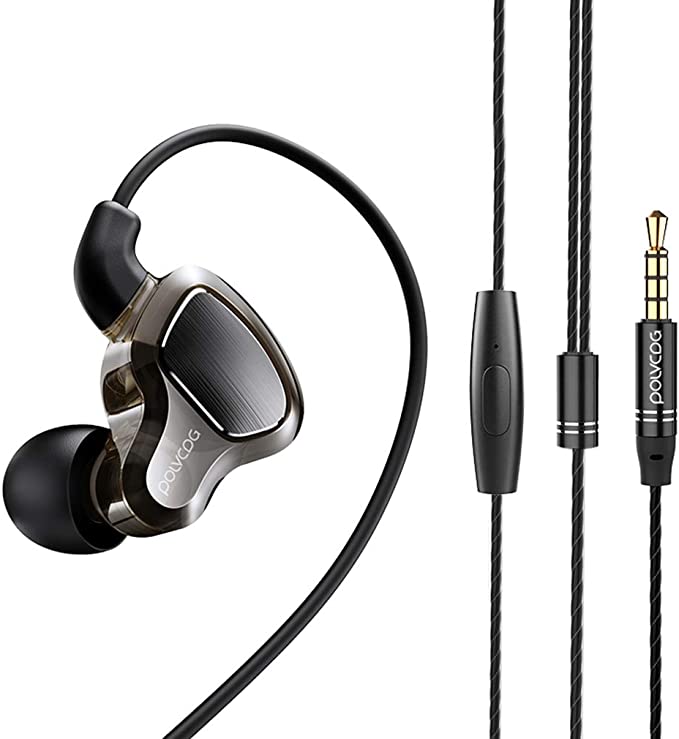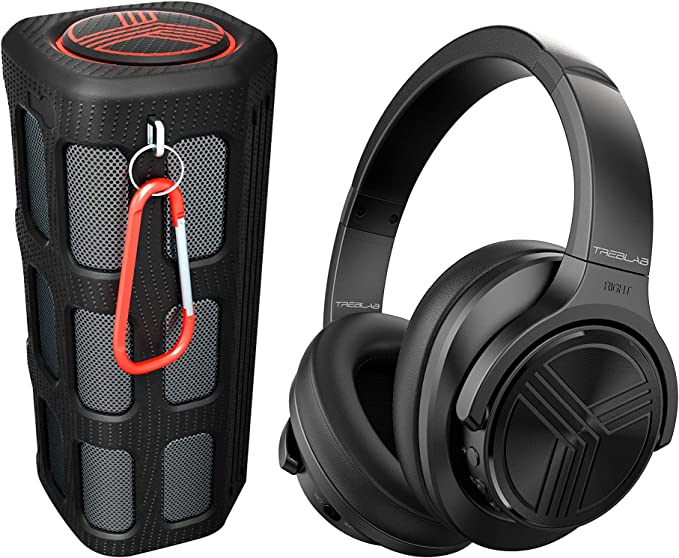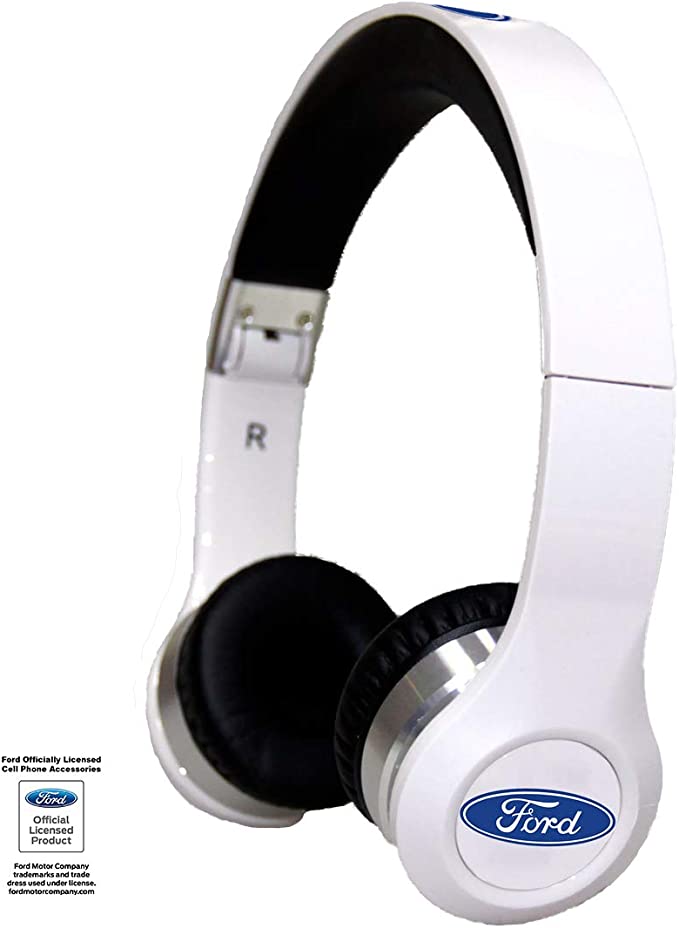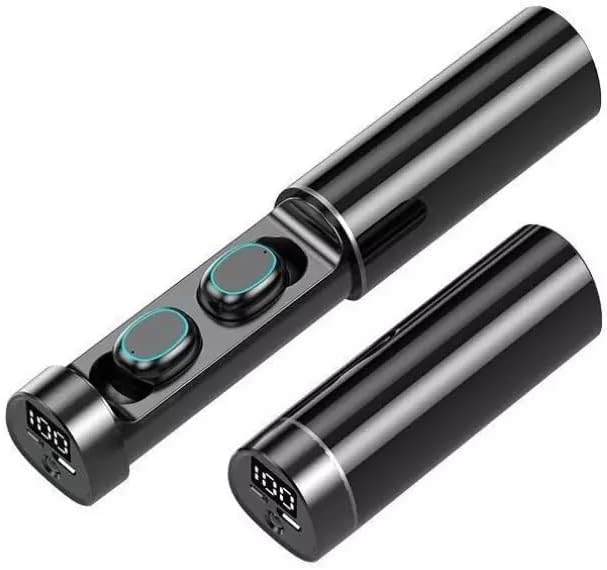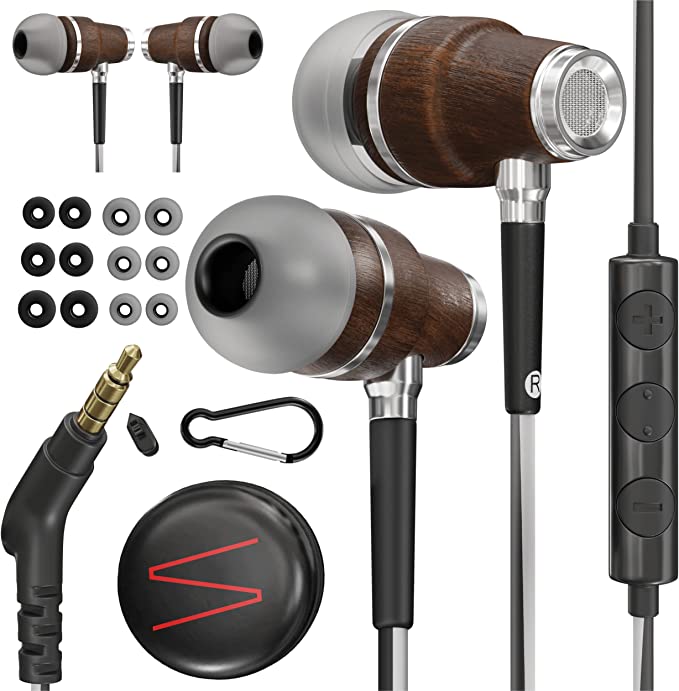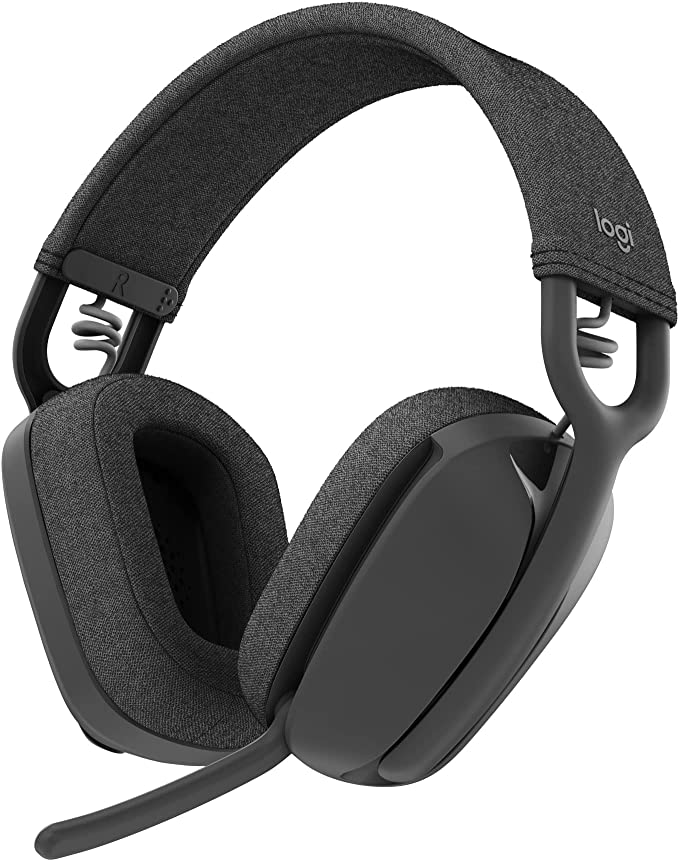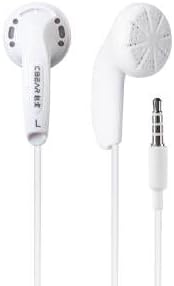miumiupop XY30 Mini Earbuds: Wireless Freedom & Hi-Fi Sound
Update on March 20, 2025, 11:42 a.m.
I still remember the frustration vividly. I was on the treadmill, finally hitting my stride, when snag – my earbud cord caught on the control panel, yanking the buds from my ears and sending my phone tumbling to the floor. It was the final straw. That day, I vowed to ditch the wires and embrace the freedom of wireless audio. But how do these tiny marvels actually work? Let’s untangle the science behind wireless earbuds, using the miumiupop XY30 mini true wireless earbuds as our guide.

A Brief History of Untethered Sound
The dream of wireless audio is older than you might think. It predates even the widespread adoption of wired headphones! Early radio pioneers, like Guglielmo Marconi in the late 19th and early 20th centuries, experimented with transmitting sound without wires. These weren’t personal listening devices, of course, but the fundamental principle was the same: using radio waves to carry audio signals.
Fast forward to the 1990s. Engineers at Ericsson, a Swedish telecommunications company, were working on a way to connect mobile phones to accessories, like headsets, without cables. The project was initially called “short-link” radio technology, but they needed a catchier name. They settled on “Bluetooth,” inspired by Harald Bluetooth, a 10th-century Danish king who united warring tribes – a fitting metaphor for connecting different devices.

Bluetooth Demystified: Connecting Without Cables
Bluetooth, at its core, is a short-range wireless communication technology. It uses radio waves in the 2.4 GHz ISM (Industrial, Scientific, and Medical) band, a frequency range reserved internationally for unlicensed use. Think of it like a very sophisticated walkie-talkie system for your devices.
When you “pair” your miumiupop XY30 earbuds with your phone, they go through a handshake process. The earbuds and phone identify each other and establish a secure, encrypted connection. This connection is based on a specific Bluetooth “profile,” which defines the type of data being transmitted. For audio, the most common profiles are A2DP (Advanced Audio Distribution Profile) for stereo audio streaming and HSP (Headset Profile) or HFP (Hands-Free Profile) for calls.
But how does the music get from your phone to your ears? This is where Bluetooth “codecs” come in. A codec is essentially a digital audio encoder and decoder. Because radio waves can only carry a limited amount of data, the audio signal needs to be compressed before transmission. The codec on your phone (the transmitter) compresses the audio, and the codec in your earbuds (the receiver) decompresses it.
The miumiupop XY30, like many modern earbuds, likely uses the SBC (Subband Coding) codec, a mandatory standard for Bluetooth audio. Some devices also support AAC (Advanced Audio Coding), which generally offers better sound quality at similar bitrates. Think of codecs like different languages for translating music – some are more efficient and nuanced than others.

Digital Audio 101: From Sound Waves to Bits and Back
To understand how Bluetooth transmits sound, we need to understand how sound itself becomes digital. Sound, in the real world, is a continuous wave of air pressure variations. Our ears detect these variations and our brains interpret them as sound.
However, computers can’t directly process continuous waves. They need discrete values – 0s and 1s. This is where analog-to-digital conversion (ADC) comes in. An ADC samples the sound wave thousands of times per second, measuring the air pressure at each instant and converting it into a numerical value. This process is called sampling, and the number of samples per second is the sampling rate (measured in Hertz, or Hz). A higher sampling rate means more data points and a more accurate representation of the original sound wave.
The numerical values are then encoded into a binary format (0s and 1s), creating a digital representation of the sound. This digital data is what’s transmitted via Bluetooth. On the receiving end (in your earbuds), a digital-to-analog converter (DAC) reverses the process, converting the 0s and 1s back into a continuous electrical signal that drives the earbud speakers.
The miumiupop XY30: A Case Study
The miumiupop XY30 mini true wireless earbuds are a great example of how all these technologies come together in a tiny package. Their “mini” design makes them incredibly portable, fitting easily in a pocket or bag. The earbuds feature intuitive touch controls, allowing you to play/pause music, answer calls, skip tracks, and adjust the volume with simple taps. This eliminates the need to constantly reach for your phone.
The one-step pairing process simplifies the initial connection. Once paired with your device (iOS or Android), the earbuds automatically connect whenever you take them out of the charging case. This seamless experience is a hallmark of modern Bluetooth technology.
The Science of Sound in a Tiny Package: Making Waves
Now, let’s talk about how these earbuds actually produce sound. Inside each earbud is a tiny speaker, often called a “driver.” This driver is essentially a miniature diaphragm that vibrates rapidly. When an electrical signal (from the DAC) passes through the driver, it creates a magnetic field that interacts with a permanent magnet, causing the diaphragm to move back and forth.
This movement creates pressure waves in the air – sound waves! The frequency of these waves determines the pitch of the sound (high frequency = high pitch, low frequency = low pitch), and the amplitude (size) of the waves determines the volume (large amplitude = loud sound).
The miumiupop XY30 utilizes a “composite diaphragm.” This means the diaphragm is made of multiple materials, each with different properties. This design allows for a wider frequency response – meaning the earbuds can reproduce a broader range of sounds, from deep bass to high treble – and better overall sound quality compared to diaphragms made of a single material. The specific materials used can affect the sound signature, with some materials emphasizing bass, others emphasizing clarity, and so on.
Bluetooth 5.0: The Current Standard
The miumiupop XY30 earbuds utilize Bluetooth 5.0, the current standard for Bluetooth technology. This version offers significant improvements over its predecessors:
- Increased Speed: Bluetooth 5.0 doubles the data transfer speed compared to Bluetooth 4.2, allowing for higher-quality audio streaming and reduced latency (the delay between the audio source and the earbuds).
- Extended Range: Bluetooth 5.0 quadruples the range, theoretically allowing for connections up to 800 feet (though walls and interference will reduce this in practice).
- Improved Power Efficiency: Bluetooth 5.0 is designed to consume less power, extending the battery life of both the earbuds and the connected device.
- Dual Audio: Bluetooth 5.0 allows you to connect two sets of earbuds to the same device simultaneously, so you can share your music with a friend. (This feature may not be supported by all devices.)
These improvements make Bluetooth 5.0 ideal for wireless earbuds, providing a more stable, reliable, and power-efficient connection.
Everyday Life, Unplugged: Real-World Benefits
The benefits of wireless earbuds extend far beyond just avoiding tangled wires. Imagine:
- At the Gym: No more snagging your cord on weights or equipment. Focus on your workout, not your earbuds.
- On Your Commute: Enjoy your music or podcasts on the bus or train without disturbing your fellow passengers or worrying about wires getting caught.
- Working from Home: Take calls hands-free while multitasking, or listen to music to boost your focus.
- Making Calls: The built-in microphone allows for clear calls without having to hold your phone.
The compact size and secure fit of the miumiupop XY30 make them ideal for these scenarios. The multiple ear tip sizes (S/M/L) ensure a comfortable and snug fit, which is crucial not only for comfort but also for sound quality. A good seal helps to block out external noise and improve bass response.

Looking Ahead: The Future of Wireless Audio
The future of wireless audio is exciting. We can expect even further improvements in:
- Sound Quality: Lossless audio streaming over Bluetooth is a major goal, delivering CD-quality sound without compression.
- Battery Life: Advancements in battery technology will lead to longer playtime on a single charge.
- Noise Cancellation: More sophisticated active noise cancellation (ANC) technology will block out even more unwanted noise.
- Smart Features: Integration with smart assistants, health monitoring sensors, and other advanced features will become more common.
- Miniaturization: Earbuds will likely continue to shrink in size while maintaining or improving performance.
The miumiupop XY30, while a current-generation product, represents a significant step forward in the evolution of wireless audio. It demonstrates how far the technology has come and hints at the even more impressive innovations to come. By understanding the underlying science, we can appreciate the ingenuity packed into these tiny devices and the freedom they provide.

